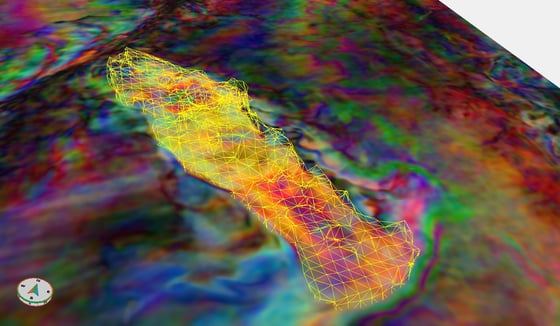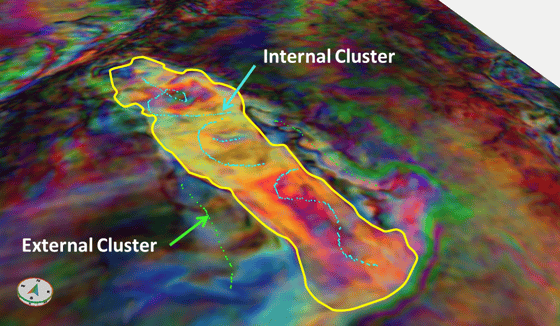The Adaptive Geobodies tool tool is based on generating delineating geological deposits from data values using model based delineation. It is a powerful and flexible tool which can be used in multiple ways. The basic techniques will be shown below and in this instalment the benefits of using a Standard Frequency Decomposition blends for creating geobodies.
The benefits of the different Blending techniques were outlines in the previous blog posts and here we will look at using the Standard blending method to extract geological features. The Constant Bandwidth and Uniform/Exponential Constant Q are useful reconnaissance blends as they have very good frequency resolution but poorer temporal resolution. As a result it is possible to identify subtle frequency differences within these blends and subsequently extract them with the Adaptive Geobodies workflow.

Watch the Tutorial Video below:
After identifying this area of interest on the Frequency Decomposition Blend, use the Data Cluster Definition tool in the Geobody Toolbox to draw/define clusters of data values and to create a new geobody (which will appear in the project tree). Use the Geobody Adapting/Editing controls (to be found under "Properties" when a geobody is selected in the project tree) to grow a Geobody from the user defined data clusters and adjust its visualisation. The Adaptive Geobodies should now be within the area of interest. If necessary, use the other Geobody Toolbox tools (Adapting/Editing controls) to refine the Geobody to more accurately fit the data or the Splitting option if the event is compartmentalised. In the image below, to constrain the Geobody to the anomaly, clusters were segregated into internal clusters and external clusters, which determine data to be included and excluded from the Geobody.

In the next instalment we will look at the benefits of using the High Definition Frequency Decomposition Blends and how these can be implemented into STOOIP/GIIP calculations.



